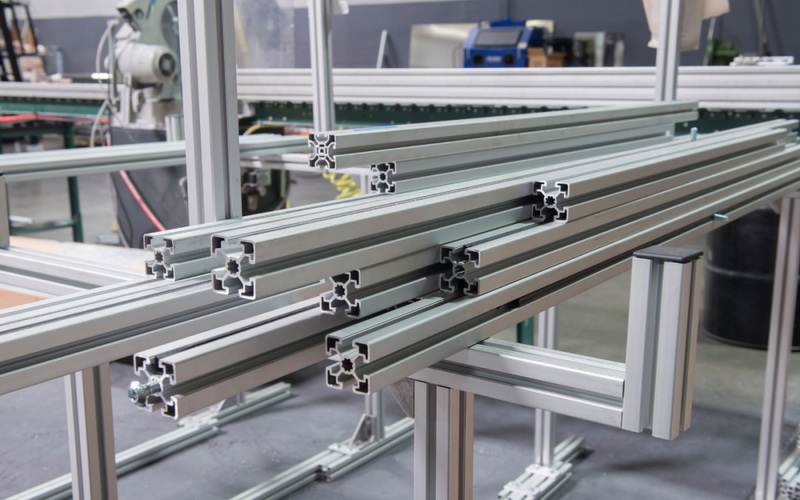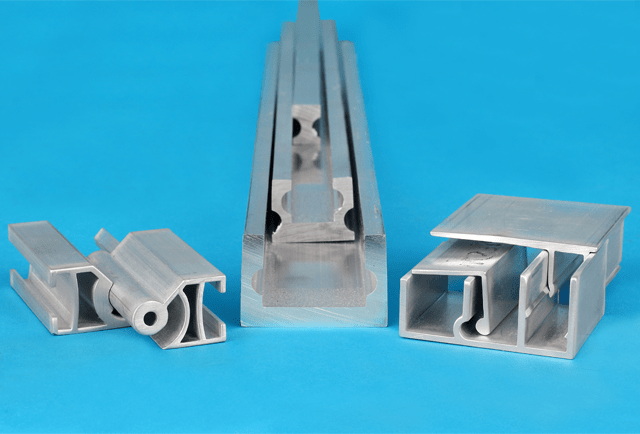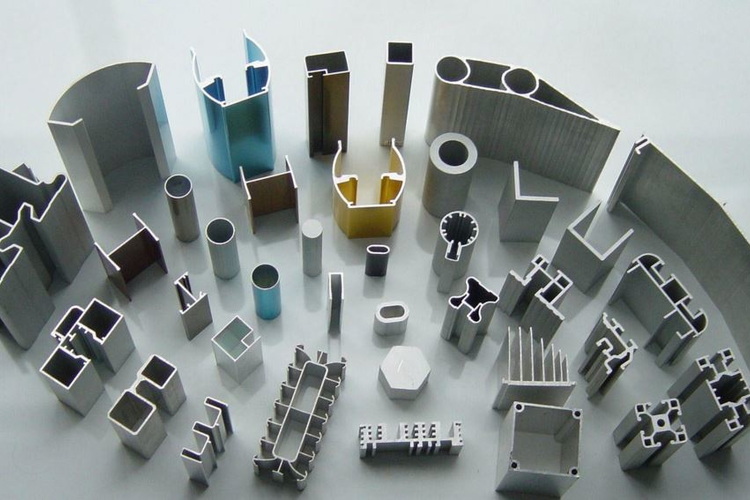Content Menu
● Introduction
● Understanding Aluminum Extrusion
● Key Benefits of Aluminum Extrusions
● Applications of Aluminum Extrusions
>> Construction and Architecture
>> Transportation
>> Electronics and Electrical Applications
>> Renewable Energy
>> Industrial Machinery
● Innovations in Aluminum Extrusion Technology
● The Future of Aluminum Extrusions
● Conclusion
● Frequently Asked Questions
>> Q1: What is the difference between standard and custom aluminum extrusions?
>> Q2: How does the aluminum extrusion process affect the material's properties?
>> Q3: Are aluminum extrusions environmentally friendly?
>> Q4: Can aluminum extrusions be used in marine environments?
>> Q5: How do aluminum extrusions compare to other materials like steel or plastic in terms of cost and performance?
Introduction
Aluminum extrusions have revolutionized various industries with their versatility, strength, and lightweight properties. This manufacturing process has opened up a world of possibilities for designers, engineers, and manufacturers across multiple sectors. From construction to transportation, electronics to renewable energy, aluminum extrusions play a crucial role in shaping our modern world. In this comprehensive article, we will explore the fascinating realm of aluminum extrusions, their applications, benefits, and the innovative ways they are being used to solve complex engineering challenges.

Understanding Aluminum Extrusion
Aluminum extrusion is a manufacturing process that involves forcing heated aluminum alloy through a die with a specific cross-sectional profile. This process creates long, straight metal parts with consistent cross-sections. The resulting extruded aluminum can be cut to desired lengths and further processed to meet specific requirements.
The versatility of aluminum extrusion lies in its ability to create complex shapes and profiles that would be difficult or impossible to achieve through other manufacturing methods. This flexibility, combined with aluminum's inherent properties, makes extruded aluminum an ideal choice for a wide range of applications.
Key Benefits of Aluminum Extrusions
1. Lightweight yet strong: Aluminum extrusions offer an excellent strength-to-weight ratio, making them ideal for applications where weight reduction is crucial.
2. Corrosion resistance: Aluminum naturally forms a protective oxide layer, providing excellent corrosion resistance without the need for additional treatments.
3. Thermal conductivity: Aluminum is an excellent conductor of heat, making it suitable for applications requiring efficient heat dissipation.
4. Electrical conductivity: The high electrical conductivity of aluminum makes it an excellent choice for electrical applications.
5. Recyclability: Aluminum is 100% recyclable, making it an environmentally friendly option for sustainable design and manufacturing.
6. Design flexibility: The extrusion process allows for the creation of complex shapes and profiles, enabling innovative design solutions.
7. Cost-effective: Aluminum extrusions often require minimal post-processing, reducing overall production costs.
Applications of Aluminum Extrusions
Construction and Architecture
In the construction industry, aluminum extrusions are widely used for:
- Window and door frames
- Curtain walls
- Structural framing systems
- Railings and balustrades
- Solar panel mounting systems
The lightweight nature of aluminum extrusions makes them easy to install, while their strength and durability ensure long-lasting performance in various weather conditions.
Transportation
The automotive and aerospace industries heavily rely on aluminum extrusions for:
- Vehicle body frames
- Bumper systems
- Heat exchangers
- Seat frames
- Aircraft flooring and interior components
The use of aluminum extrusions in transportation helps reduce overall vehicle weight, improving fuel efficiency and performance.
Electronics and Electrical Applications
Aluminum extrusions find extensive use in the electronics industry for:
- Heat sinks for electronic components
- LED lighting housings
- Enclosures for electronic devices
- Cable trays and management systems
The excellent thermal and electrical conductivity of aluminum makes it an ideal choice for these applications.
Renewable Energy
In the rapidly growing renewable energy sector, aluminum extrusions are used for:
- Solar panel frames and mounting systems
- Wind turbine components
- Geothermal heat exchanger tubes
The corrosion resistance and durability of aluminum extrusions make them well-suited for outdoor renewable energy applications.
Industrial Machinery
Aluminum extrusions are widely used in industrial machinery for:
- Conveyor systems
- Machine guards and enclosures
- Workstations and assembly lines
- Pneumatic and hydraulic cylinder bodies
The versatility and ease of customization of aluminum extrusions make them ideal for creating modular and adaptable industrial equipment.

Innovations in Aluminum Extrusion Technology
As technology advances, so does the field of aluminum extrusion. Some recent innovations include:
1. Multi-hole dies: These allow for the simultaneous extrusion of multiple profiles, increasing production efficiency.
2. Micro-extrusion: This technique enables the production of extremely small and precise aluminum profiles for use in miniaturized devices.
3. 3D-printed dies: Additive manufacturing technologies are being used to create complex extrusion dies, expanding the possibilities for intricate profile designs.
4. Advanced alloys: New aluminum alloys are being developed to enhance specific properties such as strength, formability, or corrosion resistance.
5. Hybrid extrusion: This process combines aluminum extrusion with other materials or manufacturing techniques to create unique composite products.
The Future of Aluminum Extrusions
As industries continue to evolve and face new challenges, aluminum extrusions are poised to play an even more significant role in shaping our future. Some emerging trends and applications include:
1. Lightweight automotive design: With the push towards electric vehicles, aluminum extrusions will be crucial in reducing vehicle weight and extending battery range.
2. Smart buildings: Aluminum extrusion profiles are being integrated with sensors and smart technologies to create more energy-efficient and responsive building systems.
3. Additive manufacturing: The combination of aluminum extrusion and 3D printing technologies is opening up new possibilities for rapid prototyping and custom manufacturing.
4. Sustainable design: As environmental concerns grow, the recyclability and durability of aluminum extrusions make them an attractive option for eco-friendly design and construction.
5. Space exploration: The lightweight and strong properties of aluminum extrusions make them ideal for use in spacecraft and satellite components.
Conclusion
Aluminum extrusions have proven to be a versatile and invaluable resource across numerous industries. Their unique combination of strength, lightweight properties, and design flexibility continues to drive innovation and solve complex engineering challenges. As we look to the future, it's clear that aluminum extrusions will play a crucial role in shaping our world, from the cars we drive to the buildings we live and work in, and even our exploration of space.
The adaptability of aluminum extrusions to meet evolving industry needs, coupled with ongoing technological advancements in extrusion processes, ensures that this manufacturing technique will remain at the forefront of material science and engineering for years to come. As we continue to push the boundaries of what's possible in design and manufacturing, aluminum extrusions will undoubtedly be a key player in driving progress and innovation across diverse sectors.

Frequently Asked Questions
Q1: What is the difference between standard and custom aluminum extrusions?
A1: Standard aluminum extrusions are pre-designed profiles that are readily available and often used for common applications. Custom aluminum extrusions, on the other hand, are specifically designed and manufactured to meet unique requirements of a particular project or application. Custom extrusions offer greater flexibility in terms of shape, size, and functionality but may require additional tooling costs and longer lead times compared to standard profiles.
Q2: How does the aluminum extrusion process affect the material's properties?
A2: The aluminum extrusion process can actually enhance certain material properties. During extrusion, the aluminum's grain structure is aligned along the length of the profile, which can increase its strength and stiffness in that direction. Additionally, the process can improve the surface finish of the material. However, it's important to note that different alloys and extrusion parameters can result in varying material properties, so careful consideration must be given to the specific requirements of each application.
Q3: Are aluminum extrusions environmentally friendly?
A3: Yes, aluminum extrusions are considered environmentally friendly for several reasons. Firstly, aluminum is 100% recyclable and can be recycled indefinitely without losing its properties. The recycling process for aluminum requires only about 5% of the energy needed to produce primary aluminum. Additionally, the long lifespan and durability of aluminum extrusions mean they need to be replaced less frequently, reducing waste. Finally, the lightweight nature of aluminum can contribute to energy savings in transportation and construction applications.
Q4: Can aluminum extrusions be used in marine environments?
A4: Yes, aluminum extrusions can be used in marine environments due to their excellent corrosion resistance. Aluminum naturally forms a protective oxide layer when exposed to air, which provides a barrier against corrosion. For marine applications, specific aluminum alloys such as 5000 and 6000 series are often used due to their enhanced corrosion resistance. Additionally, treatments like anodizing can further improve the corrosion resistance of aluminum extrusions for harsh marine environments.
Q5: How do aluminum extrusions compare to other materials like steel or plastic in terms of cost and performance?
A5: The cost-effectiveness and performance of aluminum extrusions compared to steel or plastic depend on the specific application. In general, aluminum extrusions offer a good balance of strength, weight, and cost. They are typically lighter than steel, which can lead to energy savings in transportation applications, but may be more expensive per unit. Compared to plastic, aluminum extrusions are stronger and more durable, with better thermal and electrical conductivity, but may have a higher initial cost. However, the long-term durability and recyclability of aluminum can often offset the initial cost difference. The choice between materials ultimately depends on the specific requirements of the application, including factors such as strength-to-weight ratio, corrosion resistance, thermal properties, and lifecycle costs.






















